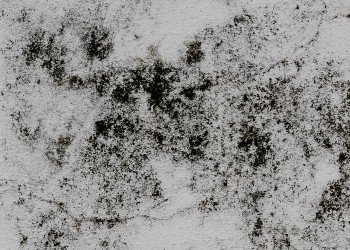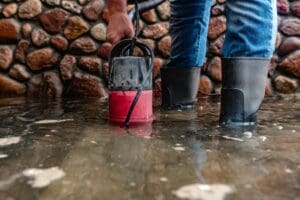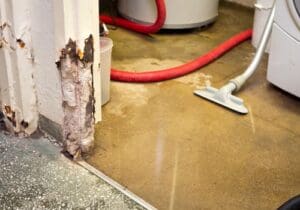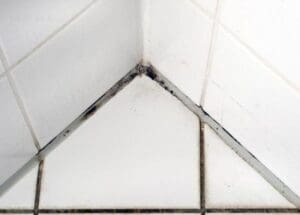Spotting Mold in Your Home
Mold is an often-overlooked problem that can quickly turn into a costly and harmful issue if left undetected. Recognizing the early signs of mold growth is crucial in preventing further damage to your home and health. Mold doesn’t always show itself immediately, but its effects can be felt both physically and visually. Whether it’s a lingering musty smell or unexplained health issues, mold can reveal itself in various ways. In this article, we’ll break down how to identify mold in your home through both bodily reactions and noticeable signs within your living spac
Cleaning & Restoration Solutions
Often called a “silent killer” mold can be tricky to spot. But here at Camelot Emergency Water Removal, we are a fully certified mold inspection and remediation contractor. We know the telltale signs of mold that a homeowner might miss.
Most signs of mold fall under one of two categories: signs in your body and signs in your home. Because mold can affect our bodies physically, the way you feel might indicate there’s a mold problem before you ever spot it in your home. On the other hand, some types of mold don’t cause an allergic response, which means signs in the home will be your key to determining if you have a mold problem.
If you suspect you may have mold in your home, you’ll need to call a professional mold inspector to be sure. Here are some signs that it might be time to make that call.
Signs in Your Body
Mold can trigger allergic reactions in some individuals, with symptoms that may range from mild to severe. While only certain types of mold are known to cause health issues, even small amounts of exposure can affect those sensitive to it. Common symptoms include:
-
Stuffy nose: Persistent nasal congestion can occur when mold spores are inhaled, leading to sinus pressure and discomfort.
-
Red, itchy eyes: Mold can irritate the eyes, causing redness, swelling, and an itchy sensation.
-
Wheezing: This respiratory symptom often accompanies mold exposure, particularly for those with asthma or other lung conditions.
-
Itchy or tingling skin: Mold spores can cause skin irritation, leading to an itchy, uncomfortable feeling on exposed skin.
-
Shortness of breath or difficulty breathing: Mold exposure can worsen breathing difficulties, especially for those with pre-existing respiratory conditions like asthma or COPD.
-
Asthma attacks: Mold can act as a trigger for asthma, leading to an increase in frequency or severity of attacks.
-
Fatigue: Prolonged exposure to mold can leave individuals feeling unusually tired or drained, even without physical exertion.
-
Fever: While rare, severe mold exposure can cause a fever, signaling an infection or a more serious allergic reaction.
People with chronic respiratory conditions, such as asthma, COPD, or allergies, are more susceptible to mold-related health problems. However, mold exposure can affect anyone, regardless of their overall health. Even those without obvious symptoms should be proactive in removing mold from their environment, as mold can still cause long-term damage to the respiratory system.
Additionally, individuals with compromised immune systems, such as the elderly, infants, or those undergoing medical treatments, may experience heightened sensitivity to mold exposure. If you notice any of these symptoms and suspect mold might be the cause, it’s important to address the issue promptly to prevent further health complications.

Signs in Your Home
Mold can often be elusive, hiding in places you may not immediately notice, but there are telltale signs to look for. It often appears as small spots or patches on walls, floors, and ceilings, and the color can range from white and gray to black, green, or even pink. Keep in mind that the color of the mold doesn’t necessarily reflect its danger level, as mold is dangerous in any form.
One of the most prominent signs of mold in your home is its distinctive, musty odor. If you’ve ever opened an old book or a damp basement door, you’re familiar with the smell. It’s a damp, earthy, and stale odor that indicates mold is likely present. If your home has a strong, foul odor instead, it could be mildew, which is a related but different type of fungus.
Here are some specific signs of mold to watch for in your home:
-
White, powdery substance: This can indicate a mold colony, often powdery or fuzzy in texture. It might be found on ceilings, walls, or in corners of rooms where moisture tends to gather.
-
Leaks: Water leaks are prime breeding grounds for mold, especially if left unchecked for a long period of time. Leaks in the roof, plumbing, or walls can lead to moisture accumulation that encourages mold growth.
-
Warped or discolored paneling or floor tiles: Mold can cause materials like wood or drywall to warp, buckle, or stain. If you notice these changes in your flooring or wall materials, mold may be present beneath the surface.
-
Water seeping in after rain: Persistent moisture after a rainstorm, particularly in basements or areas with poor drainage, can provide the perfect conditions for mold to grow. This includes water pooling in the corners of your home or moisture that remains long after the rain stops.
-
Damp or wet spots: If your floors, walls, or ceilings have areas that consistently feel damp or show signs of wetness, it’s an indication that mold might be present. These wet spots may appear as dark stains, which are often accompanied by black or green discoloration, typical of mold growth.
Mold thrives in damp or humid environments, making areas in your home more vulnerable to growth. If you suspect a mold issue, focus on these moisture-prone areas:
-
Your kitchen: The kitchen is full of moisture from cooking and dishwashing, creating a perfect environment for mold in corners, under sinks, or in cabinets.
-
Your bathroom: Bathrooms, with their frequent use of water and high humidity levels, are notorious for mold. Check around showers, bathtubs, sinks, and toilet areas, as well as behind tiles.
-
Near your windows: Condensation that forms on windows, especially in colder weather, can accumulate on windowsills or walls, leading to mold growth.
-
Your laundry room: With water-intensive appliances like washing machines and dryers, laundry rooms can easily become damp, especially if ventilation is poor. Check areas around washing machine hoses and dryers.
-
Near your humidifier: While humidifiers can improve air quality, they can also increase humidity levels in the air, creating favorable conditions for mold growth if not maintained or cleaned regularly.
If any of these signs seem familiar, it’s important to act quickly and investigate further. Mold can spread rapidly, especially when it has access to moisture, and early detection is key to preventing serious damage.

How to Prevent Mold in the First Place
The best way to prevent mold is to act quickly when conditions set in that promote mold growth. This means fixing any leaks as soon as possible, keeping an eye on your home’s humidity levels, and making an effort to ventilate damp areas when water is running (bathrooms, laundry rooms, etc.). It also means getting your home thoroughly dried and cleaned if it has been flooded or suffered any type of water damage.
Camelot Will Help Remove Mold from Your Home
Our professional mold inspectors have the skill and experience necessary to come to your house and determine if you’re suffering from a mold infestation. If that’s the case, Camelot Emergency Water Removal can remove the mold and clean and dry any affected areas. We can also clean and sanitize any HVAC ductwork that may have circulated the mold through your home.
If you’ve noticed signs of potential mold in your home, our Lansing and Kalamazoo, MI, mold inspection and remediation specialists can help. Call Camelot Emergency Water Removal today at (833) 252-0488, or contact us online.




